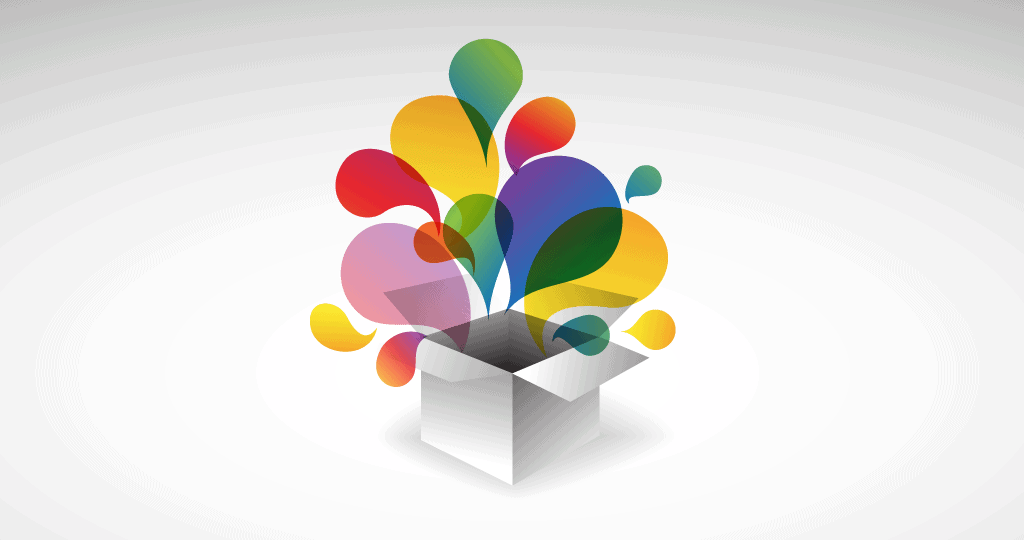
When a shopper walks into the store, even if they aren’t looking for something in your product category, the proper packaging can entice them to make a purchase they hadn’t planned. That’s why packaging should be considered part of your marketing toolbox. Here are five ways to use product packaging to stand out and create competitive differentiation.
1. Great design matters.
The front of your container is your face to the market. Whether a label or a folding carton, bright colors, glossy coatings, and specialty techniques like embossing and foil can stop shoppers in their tracks, and creative design techniques, such as vintage effects, can grab attention, too. Get creative!
2. Emphasize sustainability.
With more and more consumers looking to buy sustainable products, the packaging is a great way to show that your brand is committed to the environment. Use recycled materials, biodegradable packaging, and reusable packaging, then promote your efforts on the package where shoppers can see it easily.
3. Target specific audiences.
Did you know that you can break your packaging into target segments just as you do with other marketing materials? You might create complementary packaging for different audiences—one for men and one for women. Or, if you sell into areas with a high percentage of Spanish-speaking consumers, you might print a portion of your packaging with messaging in Spanish and English.
4. Create personalized options.
With today’s digital production, packaging can be printed in runs as short as one. Allow customers to purchase your hand-ground coffee in bags with their names on them (for example, “Joan’s Favorite Breakfast Mix”) or with the names of friends and family to use as gifts. Encourage businesses to brand their products for corporate events.
5. Add something extra.
Include something fun and surprising inside the package. This might be a coupon for their next purchase, a free sample of a related product, or a funny refrigerator magnet. Customers appreciate and remember this extra effort.
Packaging is one of your most essential marketing tools, so use it to your advantage. With a bit of creativity, you can surprise and delight your customers, build brand loyalty, and keep your customers coming back.

For many businesses, direct mail letters are their “go-to.” They are inexpensive to produce, can include BREs and other inserts, and depending on the design, can seem more personal than self-mailers. Still, the popularity of self-mailers is growing. They, too, are inexpensive and have many benefits.
Self-mailers are created when a single piece of paper is folded to create a self-contained mailing format. Depending on the size of the sheet, self-mailers can be folded into two or more panels. They can be sealed using glue lines, wafer seals, or glue spots along the edge.
Let’s take a look at some of their benefits:
- Because they require no envelope, self-mailers have no envelope or inserting costs. This makes them a great option for tight budgets.
- When unfolded, self-mailers provide lots of real estate for graphics and messaging.
- Even on digital presses, self-mailers can be printed on a wide variety of substrates, including heavier substrates.
- While we tend to think of self-mailers as simple, folded formats, their substrate flexibility allows them to include pockets and interior panels into which you can insert gift cards, reply cards, or small samples.
- Because self-mailers can be digitally printed, they can be fully personalized like any other mailer.
Self-mailers are readily identifiable as marketing mail, so they can have lower response rates. For this reason, some businesses use them for mailing to people with whom they already have a relationship—loyal customers who will open them simply because of their relationship with the brand. Others use them for campaigns in which people want promotional mail. Examples include promotions around clearance sales, new store openings with discounts, and free samples. We see them heavily used around college recruiting, as well.
In the end, choosing the correct format depends on your target audience and the goals of the campaign. Testing will be critical in helping you identify when and where each format will work best for you.

In a world defined by virtual and digital interactions, positive, tactile experiences are a delight to the senses. This is why improving the “unboxing experience” for packaged products is growing in importance among product marketers.
The “unboxing experience” is how buyers feel when they first open the package and engage with its contents. This experience might be dull as dirt (like taking a pair of shoes out of a cardboard box in a shoe store) or, like opening the box for a new Apple iPhone, it can be a multisensory extravaganza.
Whether you are selling online or in a brick-and-mortar environment, a great unboxing experience increases brand satisfaction, boosts brand engagement, and is something that your customers remember and look forward to in their next order. But how, exactly, do you create one?
Try one of these proven ways—or all three!
1. Brand it.
Companies with the best unboxing experiences create custom branded packaging. This is packaging that is unique to you and includes your company name, logo, and any other graphics or text you want to include. It’s not just “any” box. It’s your box, and everything about it reflects your brand. According to a study by Dotcom Distribution, 40% of online shoppers would share an image of their purchase on social media if it came in branded packaging.
2. Go premium.
Use premium materials to create a sense of luxury. One company that does this extremely well is Apple. All Apple products are delivered in minimalist white boxes with shimmering metallic letters. Boxes are made of premium materials with a soft-touch coating and fit the products like a tailored suit. Unboxing is truly a delightful sensory experience that makes people feel they’ve just done something special.
3. Get creative with inserts.
Don’t just send the product. Include inserts that delight, as well. Examples include personalized thank-you cards or fun product-related information. One organic goat-milk soap company, for example, includes a card with each bar of soap with a picture and the names of the goats from which the milk was taken. “Your soap was hand-crafted from the milk of Daisy, Lina, and Ana. They say, ‘Thank you!’”
Think of unboxing as being like the product’s grand entrance at a royal event. The more excitement generated around it, the more special the product—and by extension, your company—is perceived to be. If you’re going to make an entrance, make it memorable in the best possible way.
ENHANCED PACKAGING AND THE “UNBOXING EXPERIENCE”
Source: US Vertical Vision Study: Vertical Industry Views from a Socially Distanced Perch; Keypoint Intelligence 2020
